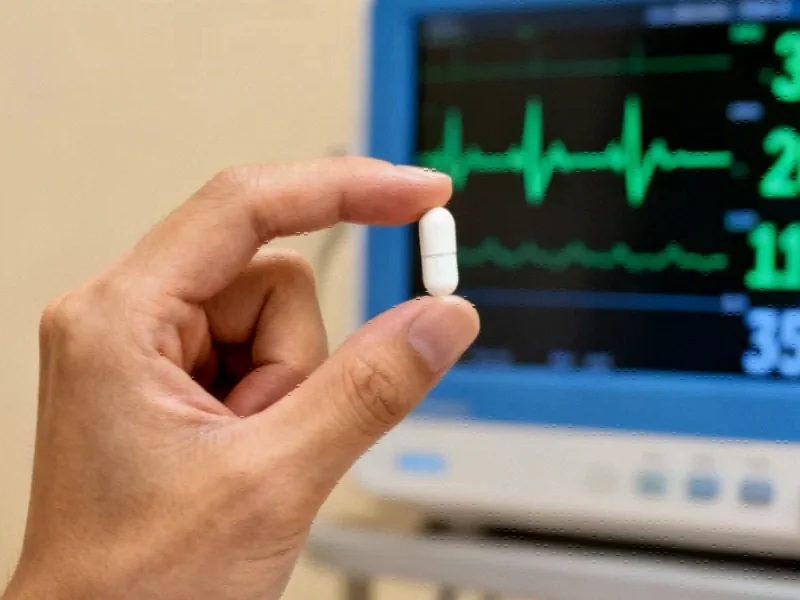FDA Expands Rybelsus Approval to Include Cardiovascular Protection
The pharmaceutical landscape has witnessed a significant advancement with the U.S. Food and Drug Administration’s recent approval of Novo Nordisk’s oral semaglutide (Rybelsus) for cardiovascular risk reduction in high-risk type 2 diabetes patients. This decision marks a pivotal moment in diabetes management, transforming Rybelsus from purely a glycemic control medication to a comprehensive cardiovascular protective therapy.
As the first and only oral GLP-1 receptor agonist to receive FDA recognition for cardiovascular benefits, Rybelsus establishes a new paradigm in preventive cardiology. The approval enables physicians to prescribe the medication for adults with type 2 diabetes who face elevated risk of major adverse cardiovascular events (MACE), including cardiovascular death, myocardial infarction, and stroke.
Groundbreaking Clinical Evidence from SOUL Trial
The regulatory decision follows compelling results from the SOUL Phase 3b trial, which demonstrated that the 14-mg dose of oral semaglutide achieved a statistically significant 14% relative risk reduction in MACE over four years compared to placebo. This extensive clinical investigation adds to the growing body of evidence supporting the cardiovascular benefits of GLP-1 receptor agonists, while establishing oral semaglutide as a formidable option in cardiovascular risk management.
Dr. John B. Buse, Director of the UNC Diabetes Care Center and Steering Committee Co-Chair of the SOUL trial, emphasized the clinical significance: “Adults with type 2 diabetes maintain heightened cardiovascular risk even without prior cardiac events. This approval addresses the critical need for therapies that extend beyond glucose control to provide comprehensive cardiovascular protection.”
The Evolution of Oral GLP-1 Therapy
Rybelsus first entered the market in 2019 as a breakthrough in diabetes treatment, offering the first oral GLP-1 receptor agonist for glycemic control. The medication’s unique formulation employs advanced absorption technology that enables the semaglutide molecule to survive the digestive process and reach therapeutic concentrations in the bloodstream.
Dave Moore, Executive Vice President of US Operations at Novo Nordisk, commented on the milestone: “The semaglutide molecule has consistently demonstrated robust outcomes across multiple large-scale trials. This approval sets a new benchmark for future oral innovations in metabolic disease management.” The company’s continued investment in related innovations demonstrates their commitment to advancing treatment options across multiple therapeutic areas.
Broader Implications for Metabolic Disease Treatment
This approval arrives amid significant market trends in the pharmaceutical sector, where companies are increasingly focusing on medications that address multiple aspects of metabolic syndrome. The cardiovascular protection demonstrated by Rybelsus represents a shift toward more holistic approaches to diabetes management that extend beyond glucose control to address the condition’s systemic complications.
The growing emphasis on comprehensive metabolic health aligns with broader industry developments in healthcare, where treatment paradigms are evolving to address the interconnected nature of chronic diseases. This approach recognizes that effective diabetes management requires addressing cardiovascular risk factors alongside glycemic control.
Future Directions in GLP-1 Therapy
While the current approval focuses on cardiovascular risk reduction in diabetes patients, Novo Nordisk has separately sought FDA approval for a higher-dose oral semaglutide formulation (25 mg) specifically for obesity treatment. This development, expected to receive regulatory decision by late 2025, could further expand the therapeutic applications of oral GLP-1 medications.
The competitive landscape continues to evolve, with Eli Lilly preparing to seek approval for its shelf-stable oral GLP-1 candidate, Orforglipron, by year-end. These advancements in recent technology demonstrate the pharmaceutical industry’s commitment to expanding treatment options for metabolic diseases through innovative delivery systems and formulations.
Economic and Accessibility Considerations
Patients anticipating oral GLP-1 options for weight management should note that these medications are unlikely to be significantly less expensive than their injectable counterparts. While eliminating needle costs, the complex formulation required for oral bioavailability involves sophisticated manufacturing processes and higher active drug concentrations, which impact pricing.
These pharmaceutical advancements occur alongside other industry developments in healthcare technology, where innovation often requires balancing therapeutic benefits with economic considerations. The integration of advanced medications into standard care protocols represents an ongoing challenge for healthcare systems worldwide.
Regulatory and Clinical Context
The FDA’s decision reflects growing recognition of the interconnected nature of metabolic diseases and cardiovascular risk. This approval builds upon earlier positive Phase 3 results that established oral semaglutide’s efficacy and safety profile, providing clinicians with expanded therapeutic options for managing complex patients with multiple risk factors.
For those seeking additional context on regulatory developments, this comprehensive coverage provides deeper insights into the approval process and its implications for clinical practice. Meanwhile, ongoing market trends in healthcare education are preparing the next generation of clinicians to effectively utilize these advanced therapeutic options.
Looking Forward: The Expanding Role of GLP-1 Therapies
The cardiovascular risk reduction approval for Rybelsus represents just one facet of the rapidly evolving GLP-1 landscape. As research continues to uncover new potential applications for these medications, their role in comprehensive metabolic disease management is likely to expand further.
This therapeutic advancement occurs within a broader context of industry developments that are reshaping how healthcare innovations reach patients. The continued evolution of GLP-1 therapies underscores the importance of ongoing clinical research and regulatory oversight in bringing effective new treatment options to those who need them most.
This article aggregates information from publicly available sources. All trademarks and copyrights belong to their respective owners.
Note: Featured image is for illustrative purposes only and does not represent any specific product, service, or entity mentioned in this article.



